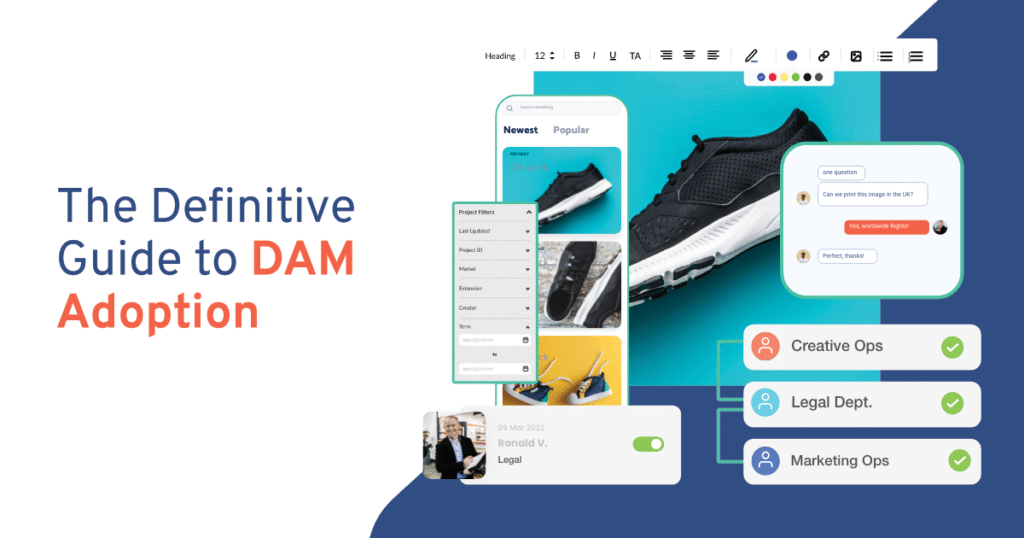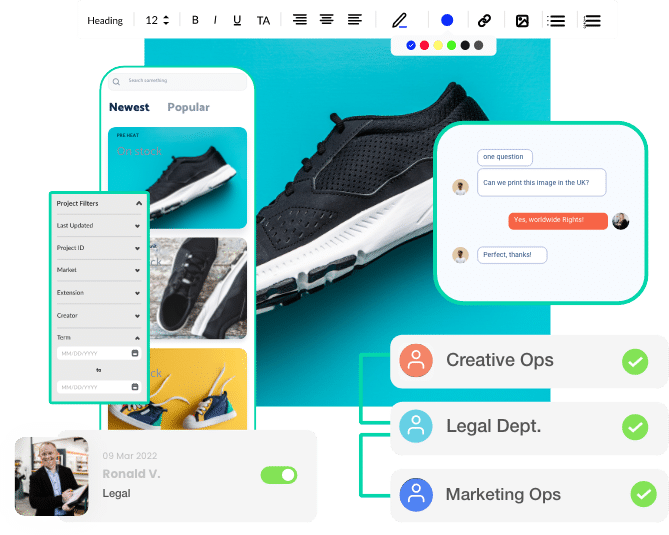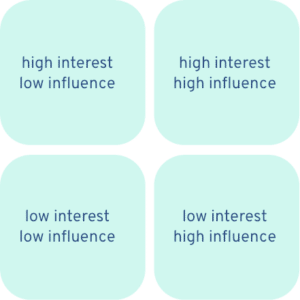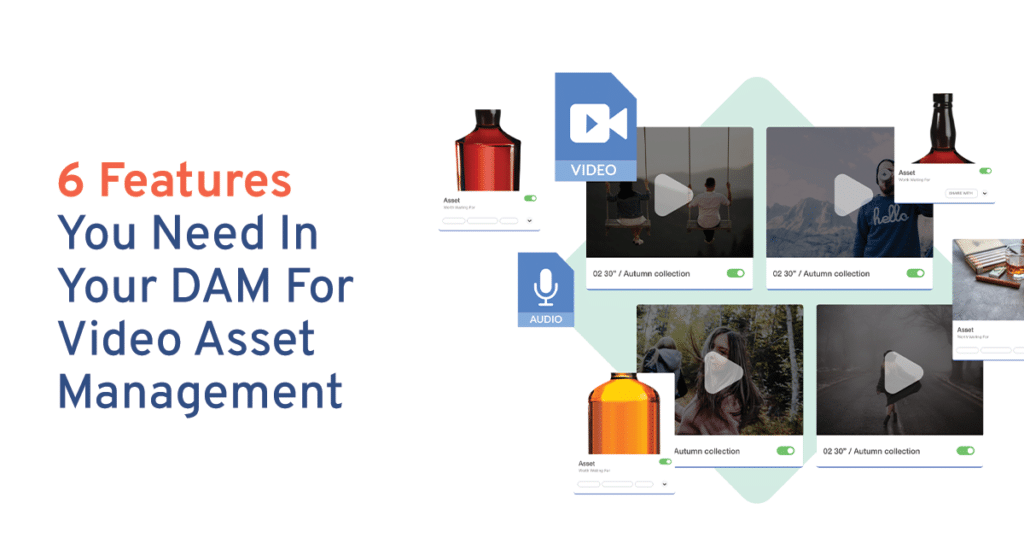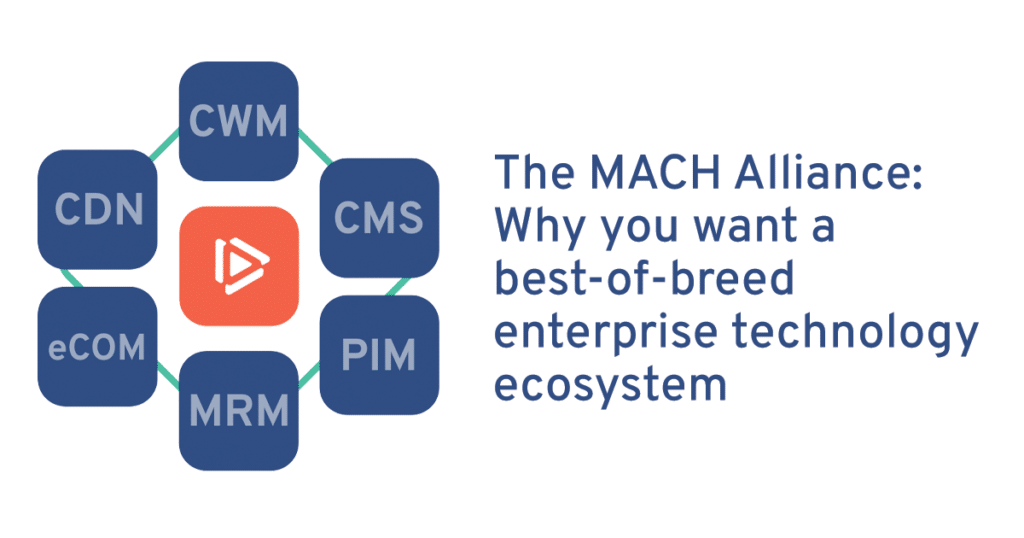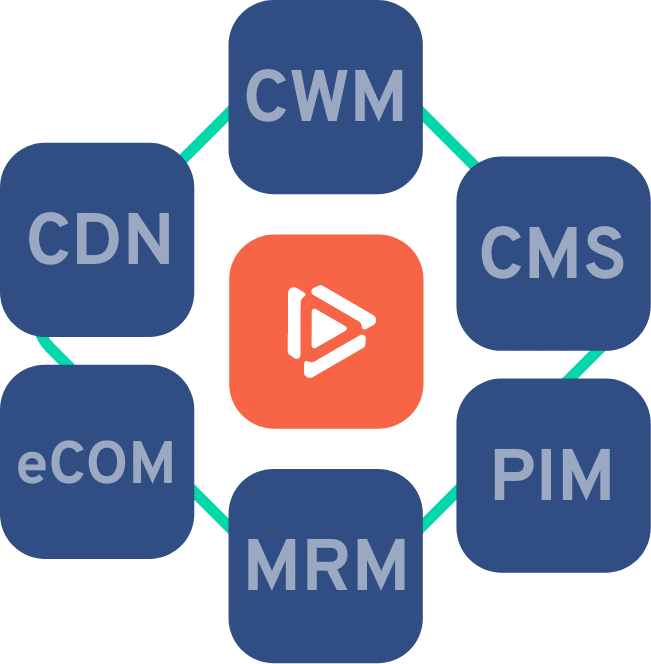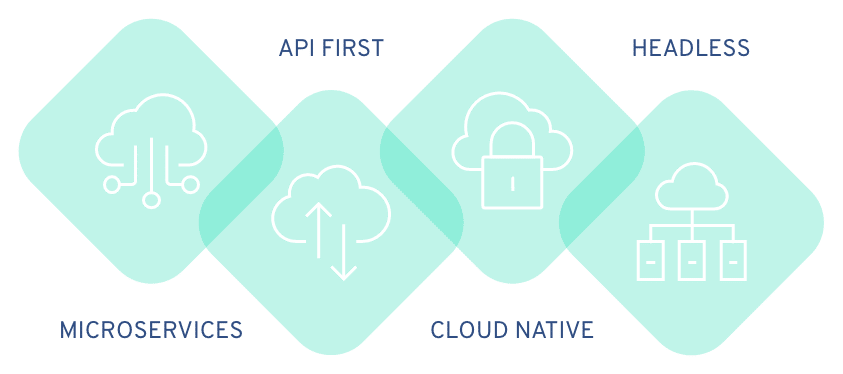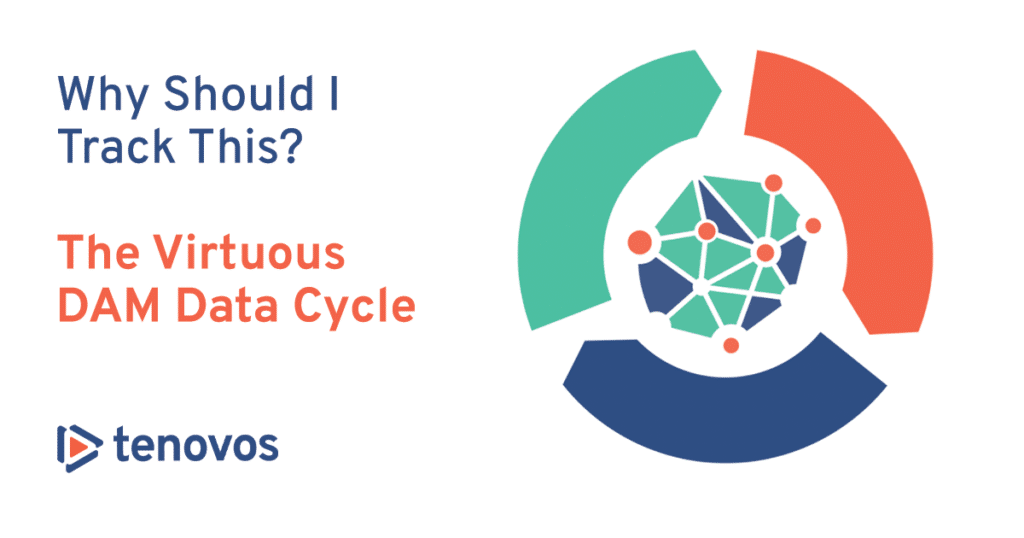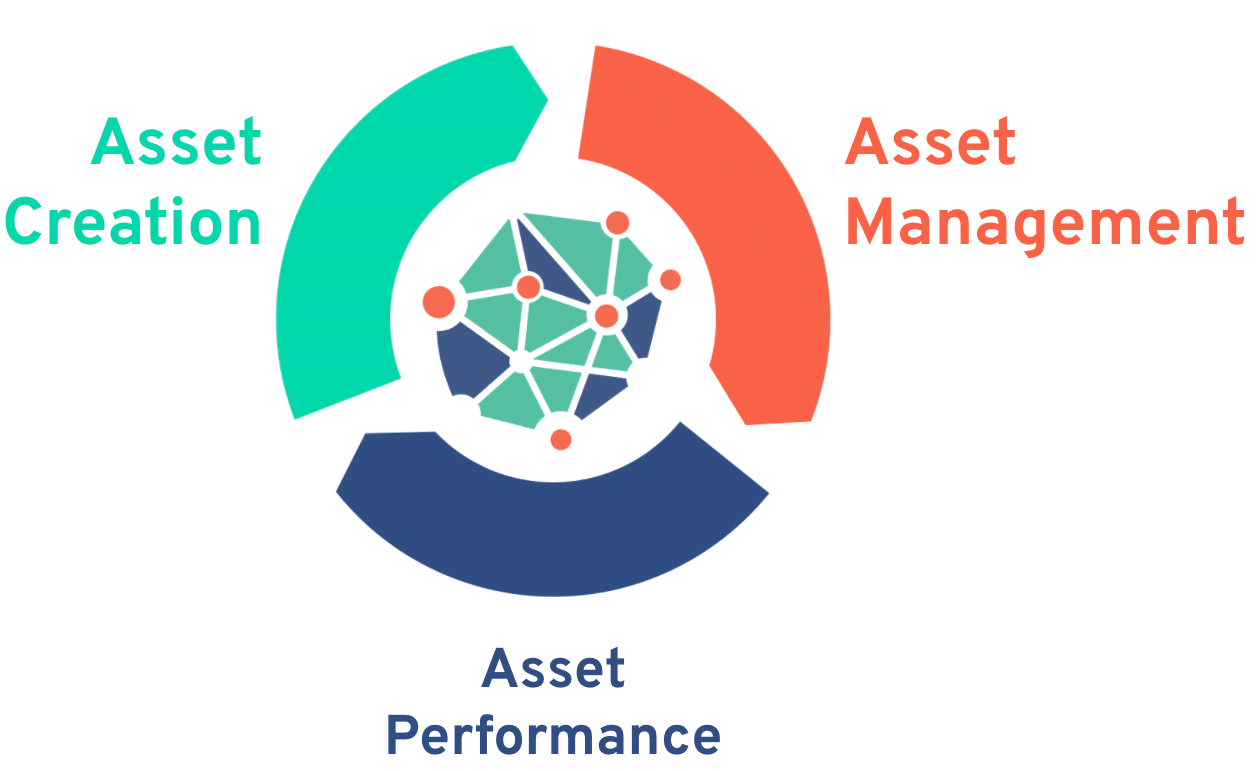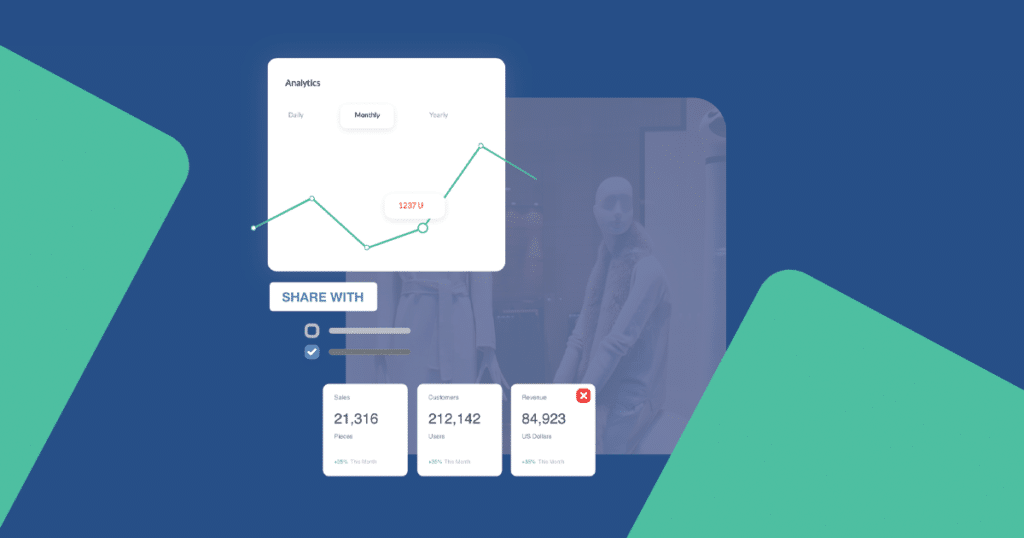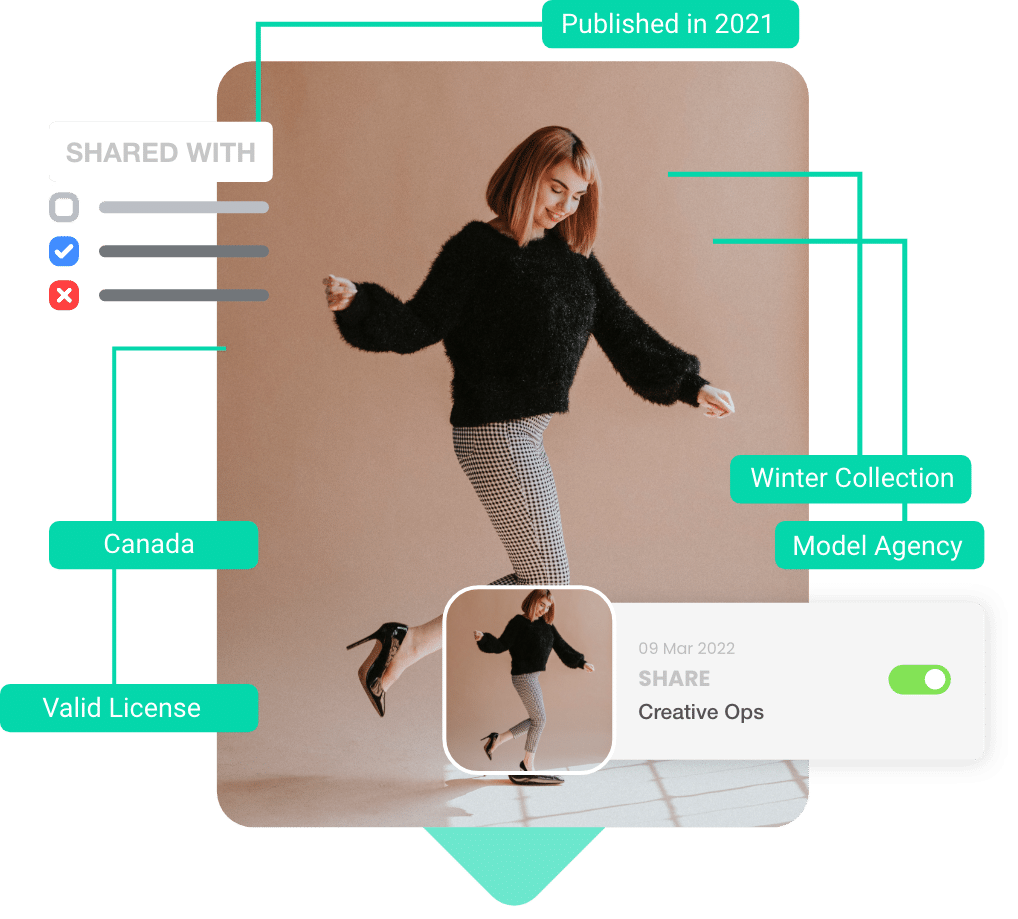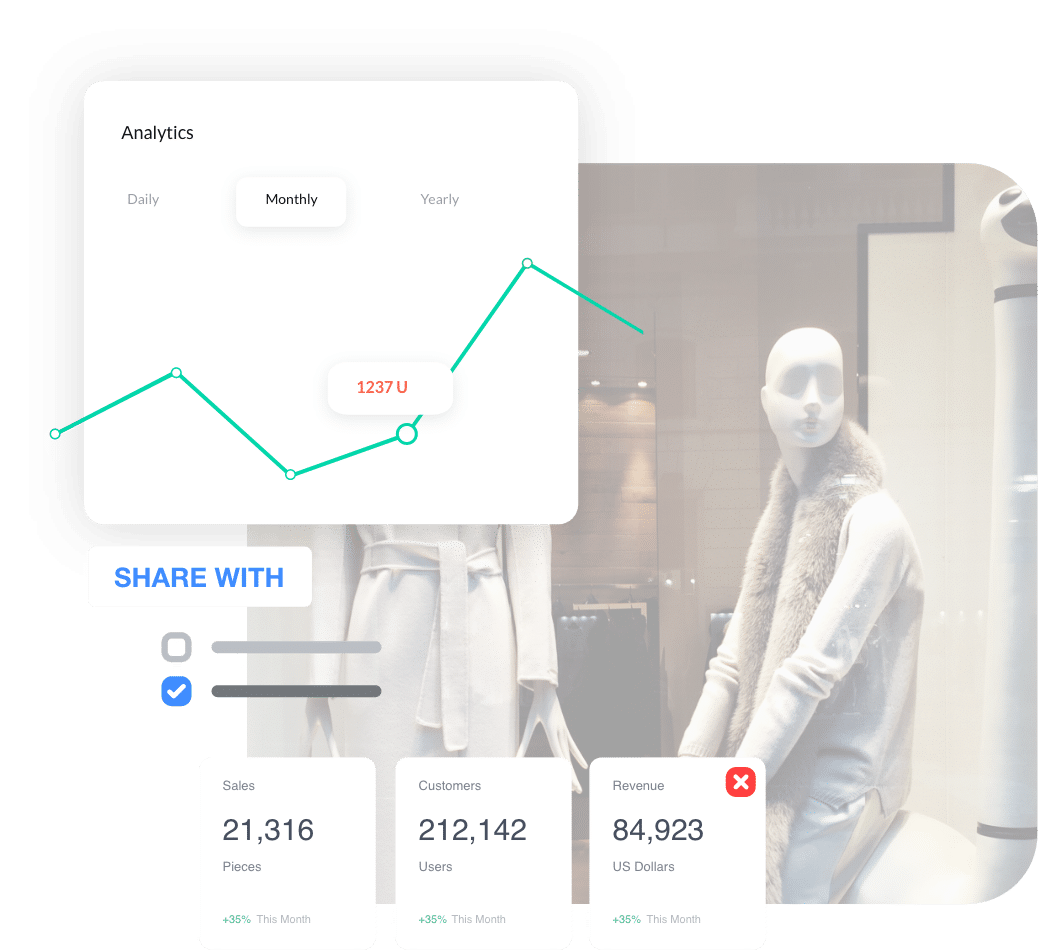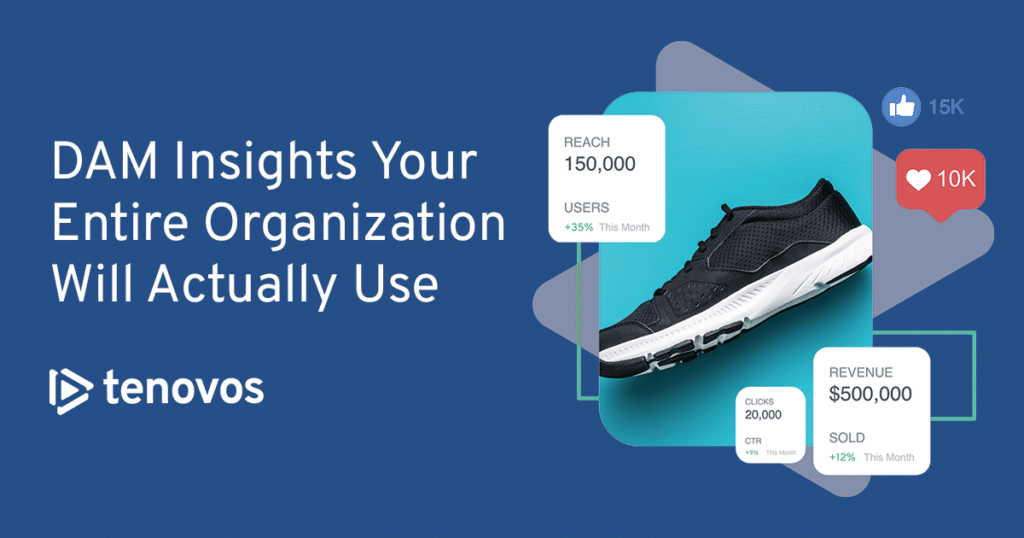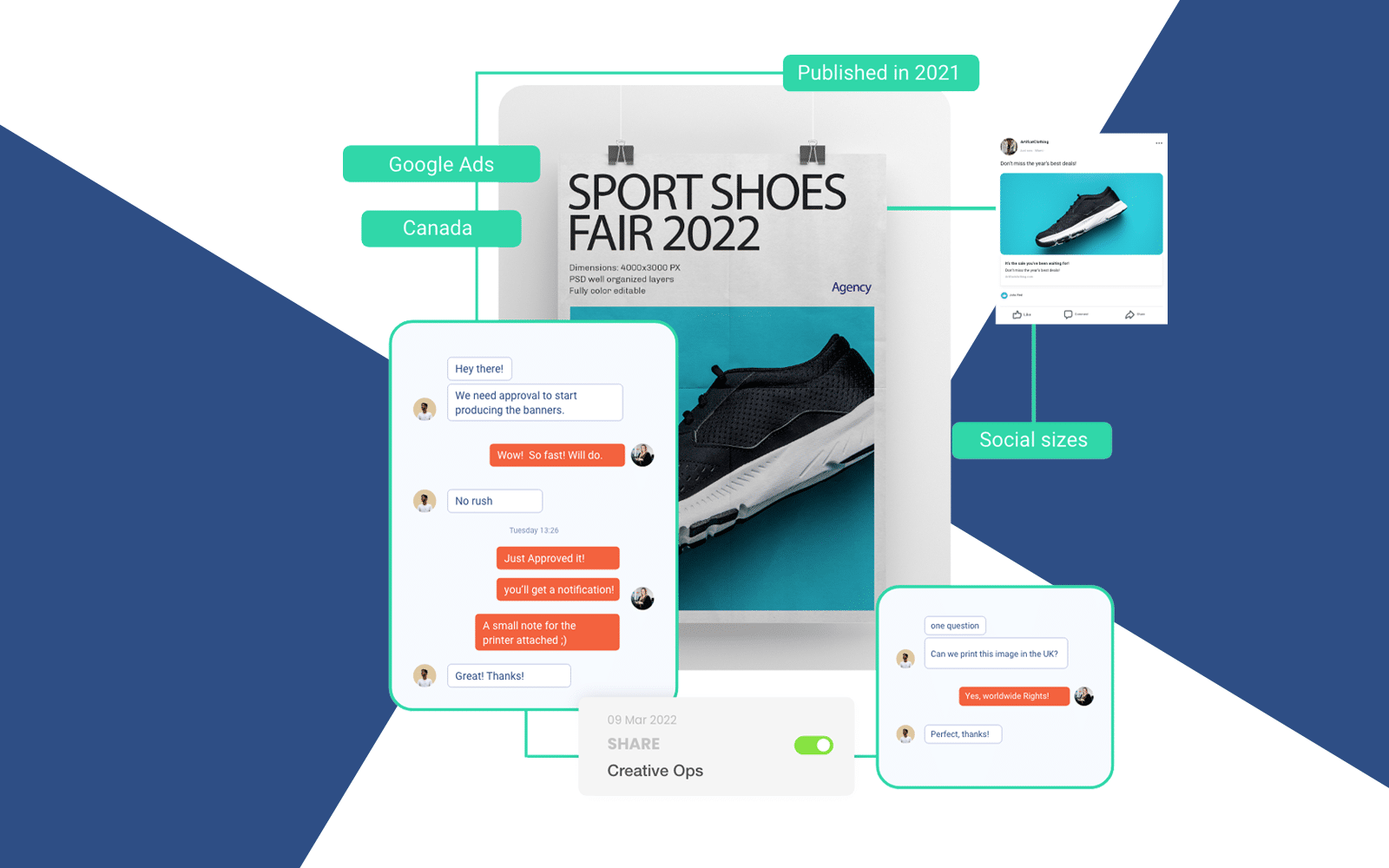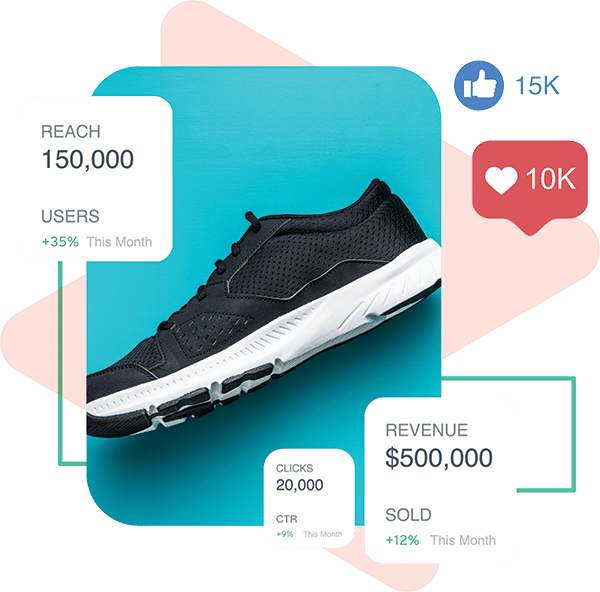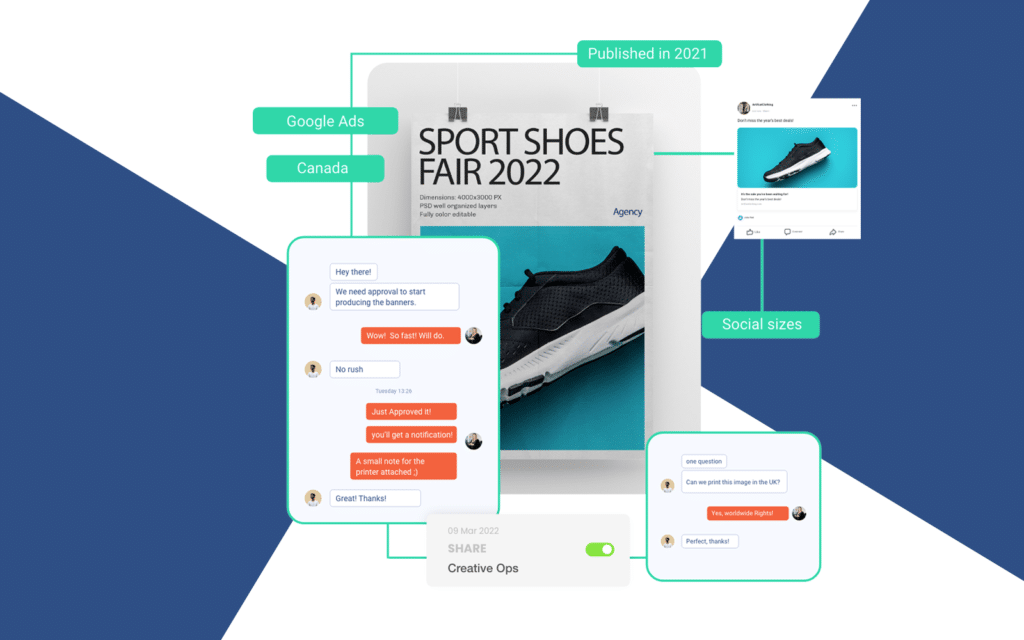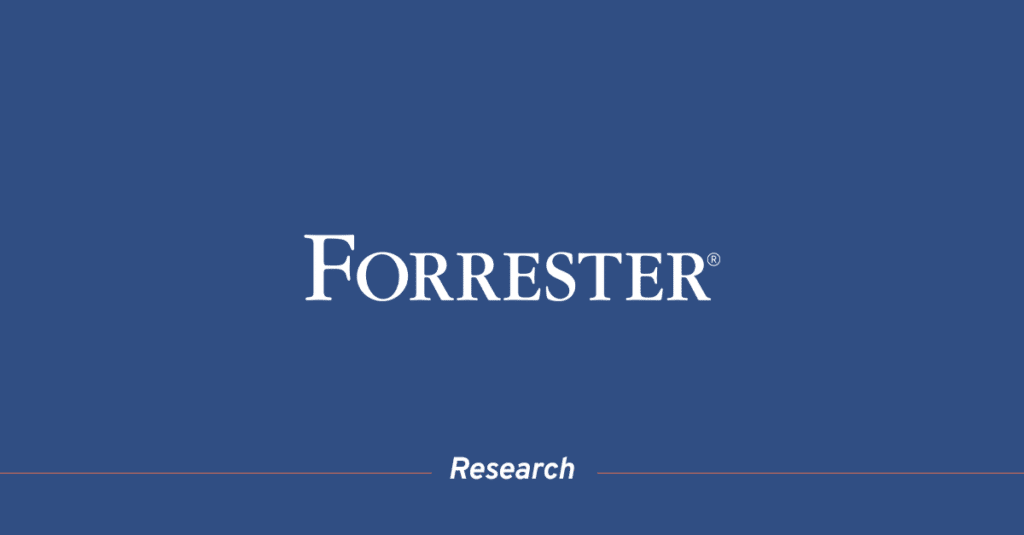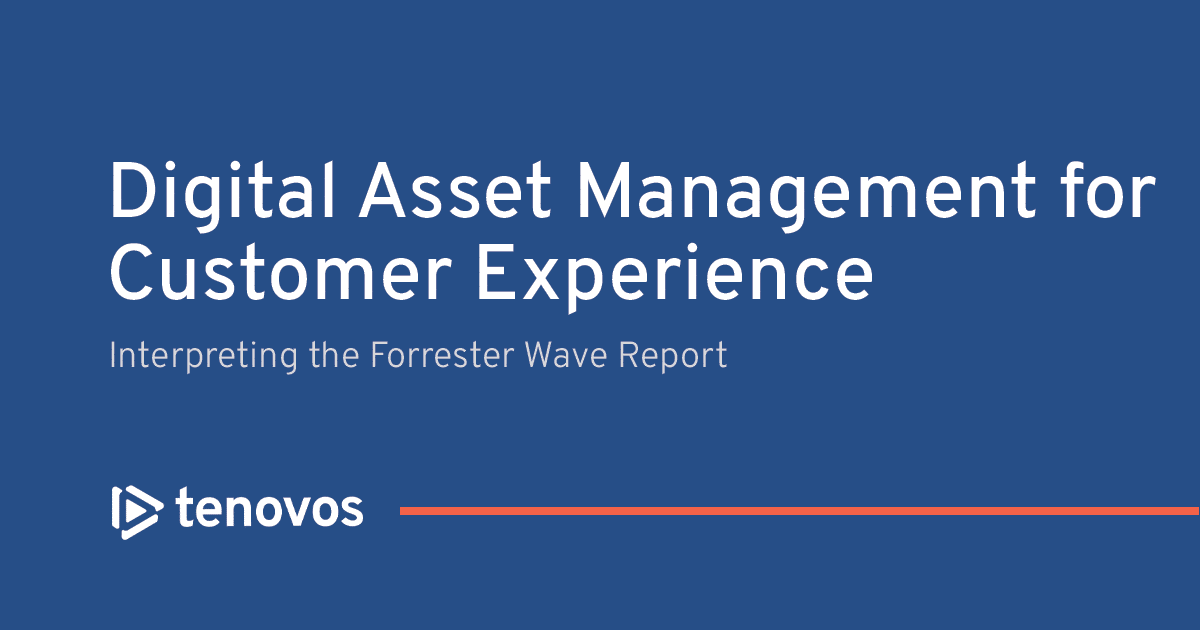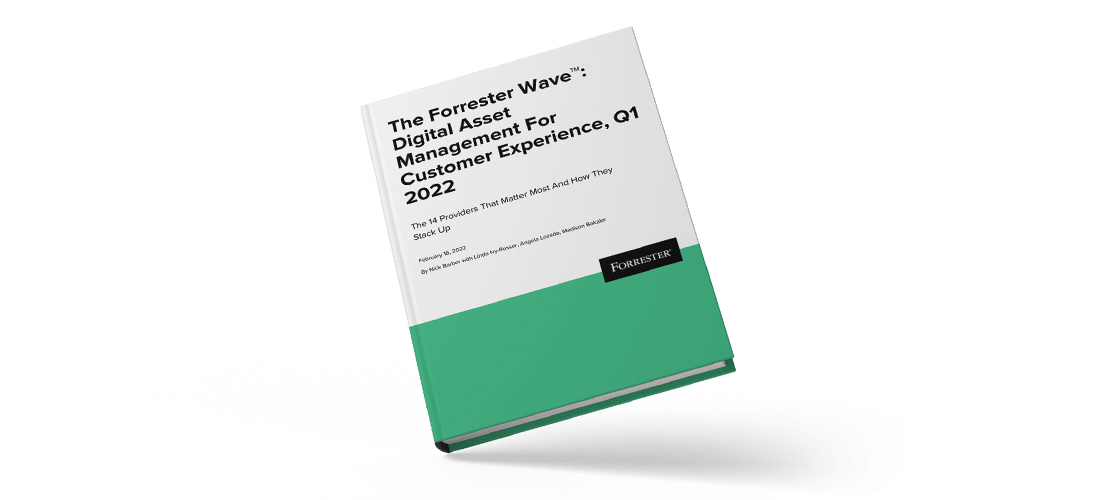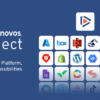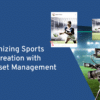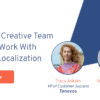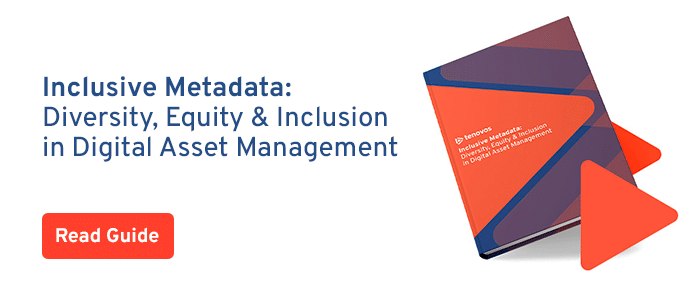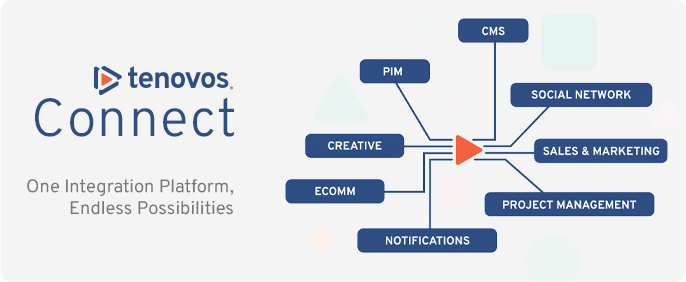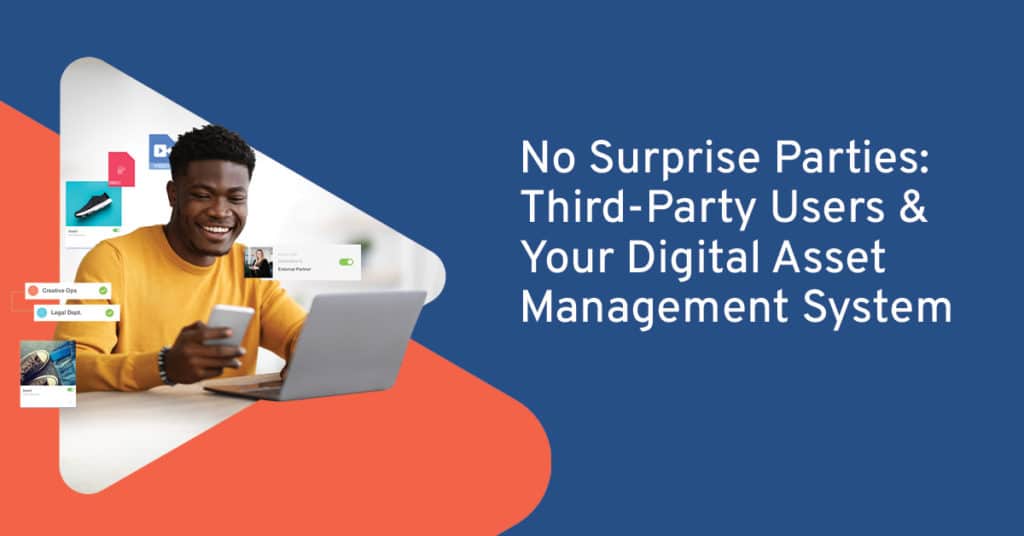

For most enterprise marketing and creative teams, there are an infinite number of assets moving around the world at any given time. You’re constantly managing things being created, approved, reviewed, stored, shared, and published. It can feel like you’re drowning in digital assets to manage. So, how do you tackle securely sharing your assets with your retail partners, distributors, and agencies?
In this article, I’ll explain how you’re probably already using a digital asset management system, even if you don’t think you are. And why you can’t manage third-party users without one. We’ll also explore how two innovative DAM features will make sharing assets with external users simpler and safer—while satisfying the security needs of your IT department.
And the icing on the cake—how the Brown-Forman Corporation, the owner of brands like Jack Daniel’s and el Jimador Tequila, modernized their asset management for third parties to increase user adoption.
You’re Probably Using A DAM, You Just Don't Know It
Every system that stores assets is a DAM. Are you uploading graphics to Mailchimp? That’s a DAM. Are you storing design files in Adobe’s Creative Cloud? Sorry, that’s a DAM too. While you’re storing, creating, and publishing content, it’s almost impossible to manage it all at a macro level across those quasi DAMs. So the question is, why settle for a subpar experience?
An enterprise-level DAM does more than just store assets. Without it, you may be stuck ferrying assets from one platform to another. You lose helpful metadata. You’re unable to track who is using your assets and how they’re using them. Without a DAM, integrations between platforms are complex and unlikely to offer data collection features. Not to mention, assets are almost impossible to secure at scale.
If you’re still using a quasi DAM, I implore you to ask yourself two questions:
- Is my current digital asset management system easy to use for my third-party partners?
- Is my current digital asset management system secure and customizable enough to scale to 1,000, 10,000, or 100,000 users?
If you hesitate to answer either of those questions, two features of enterprise DAMs may intrigue you. And hearing the story of how one multinational brand implemented them may put your mind at ease.
Sharing assets with third-parties should feel like a real party
Today, enterprise DAMs have innovated two features to help you securely share assets with users all over the world—with surprising ease. Your IT department just let out a sigh of relief.
1 – Dedicated Content Portals and Customizable Microsites
Now, you might be wondering, why am I calling portals and microsites innovative? DAMs have been doing those for years. Well, the problem lies in how we’ve done them. Traditionally, to create a partner portal or microsite, you needed to contact IT and haggle back and forth for weeks on its functionality. You launched a single asset portal to share with your partners and repeated that process, ad nauseam.
Today, modern DAMs have removed the need for IT teams to be so involved. Everything you could ever need—unlimited third-party users, customizable microsite layouts, search functionality—can all be done in 60 seconds. Not six weeks or six months. You can build personalized sites and brand portals without any code and invite internal and external users with full governance and security.
2 – Watermarking and Enhanced Asset Security
When sharing your assets with agencies, partners, and retail distributors, there’s always the risk of misuse. Once shared, how do you manage how your content is used? How can you secure assets against any funny business? The answer is watermarking.
A watermark is a piece of data that is added to content to ensure it cannot be easily misused. It could be a visual watermark across an image or video that conveys it’s a work-in-progress version—or a dynamic watermark that includes the user information of those who downloaded an asset.
One of the best new asset security features is digital forensic watermarking, wherein tracking data is embedded into an asset once it’s downloaded. If that asset ever leaks or is inadvertently published, your DAM will notify you of the misuse and point you to exactly which users accessed that asset. These features make sharing content with partners and third parties more secure than ever.
This is How It’s Done: Brown-Forman Case Study

The Brown-Forman Corporation—the owner of brands like Jack Daniel’s and el Jimador Tequila—took on the challenge of modernizing its DAM content structure. With 10,000 users ranging from internal marketing teams to third-party users like retail distributors and brand partners all around the world, they needed secure, accessible microsites that fit their ever-expanding needs.
However, their external users were unlikely to use the DAM more than a few times a month. Rather than dump all content assets into a generic microsite—which they might not remember how to use—the Brown-Forman team (with a little help from Tenovos) came up with simplified, prescriptive layouts. And that’s where storyboards were born.
Today, the Brown-Forman product partner experience is a simplified grid layout that has personalized storyboards for each brand. Each storyboard features easily recognizable product images, marketing copy, and everything related to that brand family or product.
As a result, user adoption is better than ever. Every third-party user can experience a simple, secure DAM platform, without having to be integrated into the internal digital asset management system. In the first year since the Brown-Forman team launched this updated system, users accessed the DAM in 90 countries, downloaded 300,000 assets, completed 600,000 searches, and viewed four million pages.
Invite Any User To Your Party—Your IT Department Will Thank You
The Brown-Forman Corporation skillfully modernized its asset management process to increase ease of use and user adoption. With a modern DAM, sharing and securing assets with external partners is more customizable than ever before. With features like storyboards, you can move faster and update your DAM in real-time, which keeps the pressure off your IT team. You’re free to create microsites that cater to their needs or use forensic watermarking to protect against leaks. The opportunities are only limited by what you can imagine. Let’s get this party started.

